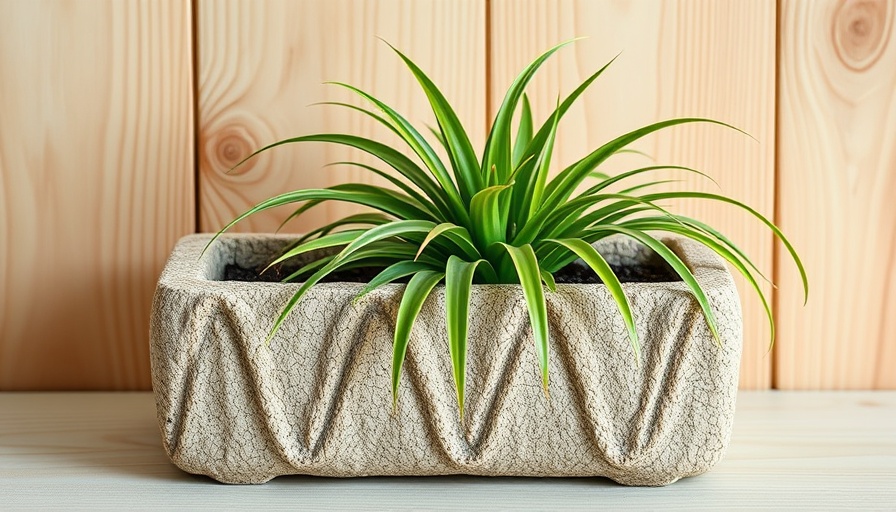
Unleashing Creativity: The Allure of DIY Hypertufa Planters
If you're looking to add a personal touch to your gardening space, crafting DIY hypertufa planters opens up a world of creative possibilities. Hypertufa, a lightweight cement mixture, offers the perfect material for anyone wanting to create beautiful, customized plant containers that can withstand the elements. From the rustic charm of a textured surface to the sleek appearance of a polished finish, the choice of molds and techniques ensures that every gardener can design something uniquely theirs.
What is Hypertufa and Why Choose It?
Hypertufa is a combination of Portland cement, perlite, and peat moss—ingredients that are not only accessible but also environmentally friendly. This mixture results in a planter that weighs less than traditional concrete containers, making them easier to manage and rearrange in your garden. Ideal for outdoor use, these planters thrive regardless of weather conditions, including freezing temperatures.
Step-by-Step Guide: Making Your Own Planters
Follow these crucial steps for a successful hypertufa project:
- Select Your Mold: The type of container you use as a mold significantly impacts the final look. For a smooth and glossy finish, opt for a sleek plastic tub. For a more rustic texture, line your mold with plastic and let natural wrinkles guide the design.
- Mixing Ingredients: Start by sifting together the dry ingredients: Portland cement, peat moss, and perlite. This ensures an even mix that promotes better hydration.
- Add Water Carefully: Slowly incorporate water until the mix reaches the consistency of thick brownie batter. This step is crucial; being too wet can compromise the planters' durability, while adding too little can hinder the mixture’s bonding.
- Mold and Cure: Pour your mixture into the mold and allow it to set. Curing is essential; keeping the hypertufa moist for the initial 48 hours helps bond the components effectively.
Benefits of Creating DIY Hypertufa Planters
Beyond being a fun and rewarding project, crafting your own hypertufa planters has several benefits. They are:
- Cost-Effective: With materials costing only between $10 and $60, creating these planters is far cheaper than purchasing equivalent ceramic or concrete pots.
- Weather-Resistant: Hypertufa can endure the harshest outdoor conditions without cracking or fading, offering longevity that traditional pots may lack.
- Personalized Aesthetic: By controlling the molds and the texture, you can create pieces that match your garden's theme or your personal taste perfectly.
Inspiration and Community
Joining a community of fellow gardening enthusiasts can provide you with further inspiration and tips. Many online forums and local gardening groups share their unique hypertufa creations, allowing you to learn from their experiences and even share your progression. The joys of gardening blossom not just through the plants we grow but also in the connections we establish with fellow green thumbs.
By crafting your hypertufa planters, you're engaging more than just in a creative endeavor—you're enhancing your home and embracing a sustainable approach to gardening. Ready to get your hands dirty and design your perfect planter? Gather your materials, follow the steps, and let your imagination lead the way!



Write A Comment